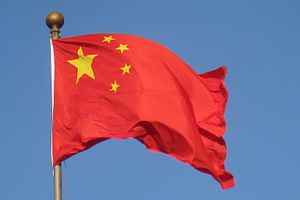This article introduces a series exploring 12 distinct “regions” within China: six “core” regions long dominated by the majority Han ethnic group and six “periphery” regions home to many of China’s ethnic minorities. To view the full series, click here.
Commentary on international relations often treats states as unitary actors, ignoring the diversity within their borders. This applies particularly to countries less familiar to Western readers: it is easier to essentialize the alien. The problem is especially acute regarding China, a country with a territory larger than the continental United States, provinces the size of European countries, and a population larger than the combined total for the 35 nations of the OECD. Western media depictions of China too frequently swing between caricatures of a monolithic one-Party dictatorship or a creaking old warship on the point of breaking apart, without considering the nation’s underlying regional variation.
Yet looking at internal variation reveal much that is not obvious at a national scale. Colin Woodard’s model of the United States as comprised of 11 “nations,” for instance, offers some useful insights into the dynamics that led to the election of Donald Trump. Likewise, we can potentially learn much about China by seeing it not as monolithic, but as 12 “regions” that reflect the country’s geographical, ethnic, and economic fault lines.
Regional conceptualizations of China are not new, with Patrick Chovanec’s “Nine Nations of China” being a recent attempt to introduce this analytical model to U.S. popular and policy discourse. In the same spirit, this series – which was conceived and written independently of Chovanec’s work – aims to elucidate for general readers the country that may be this century’s “indispensable nation.” Over the course of the next few weeks, The Diplomat will feature a series of articles introducing the “12 regions of China” and their importance to understanding the country.
The first six regions discussed in this series are almost wholly populated by the Han (“Chinese”) ethnic group, which accounts for 92 percent of the country’s population. From imperial China’s founding in the 3rd century BC, these regions have been administered continuously by ethnic Han bureaucratic governments or their sinicized counterparts. The southeast coast has loomed especially large in relations with the wider world, being China’s historical seafaring region and until recently the main source of Chinese emigration, as have the northwestern areas that mediated China’s relations with the steppe nomads and Central Asia.
The second six are regions where China’s non-Han minorities are concentrated, and which were subject to varying degrees of imperial Chinese authority over the centuries. China’s ethnic minority autonomous regions all fall within this area. The population across all these areas, except the Tibetan plateau, is now majority Han, in consequence of long term and continuing migration. These regions were historically the main location for China’s interactions with foreign peoples, and today account for the entire length of China’s land borders.
Looking at the variation across China’s Han “core” and minority “periphery,” patterns emerge that explain much about Chinese history and the nation’s present socioeconomic texture. But as the concluding pieces in this series discuss, the implications for China’s domestic politics may be less than first meets the eye: it turns out that predictions of regional strife beloved of the “church of Chinese collapsism” have weak foundations. For the outside world, however, China’s regional variation is likely to be of increasing direct interest.
Stay tuned to The Diplomat for the next article in the series, which will be published tomorrow.
John Lee is a former visiting fellow of the Mercator Institute for China Studies. He tweets at @J_B_C16.

































